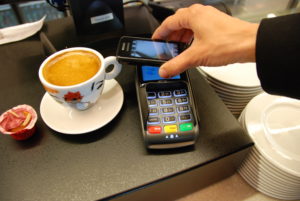Payment methods refer to the ways in which consumers and businesses can make and receive payments for goods and services. There are various types of payment methods available, including cash, checks, credit cards, debit cards, digital wallets, mobile payment apps, bank transfers, and more.
The importance of payment methods cannot be overstated. They play a crucial role in facilitating transactions, enabling commerce, and driving economic growth. The choice of payment method can impact the convenience, security, and cost of transactions, as well as customer satisfaction and business revenue.
Types of Payment Methods
Payment methods have evolved significantly over the years, offering consumers and businesses a variety of options to suit their needs.
Traditional payment methods include cash, checks, and money orders. Cash is the most direct form of payment, accepted universally. Checks, although less popular now, allow for payments directly from one’s bank account. Money orders, purchased with cash, provide a secure alternative for those without a checking account.
Credit and debit cards represent a bridge between traditional and digital payment methods. They offer the convenience of cashless transactions, with the former allowing for borrowed funds and the latter drawing directly from a bank account.
Digital payment methods have surged in popularity with the advent of the internet and smartphones. Online banking allows for electronic transfers and bill payments directly from a bank account. Mobile payment apps use Near Field Communication (NFC) technology for contactless payments.
E-wallets store payment information securely, enabling quick online transactions. Peer-to-peer payment apps facilitate instant money transfers between individuals.
Cryptocurrencies, such as Bitcoin and Ethereum, represent a new frontier in digital payments. They use blockchain technology for secure, decentralized transactions.
The landscape of payment methods is diverse, offering traditional cash and check options, credit and debit cards, various digital payment platforms, and even cryptocurrencies. Each method caters to different needs and preferences, reflecting the evolving nature of commerce and technology.
Traditional Payment Methods
Traditional payment methods have been the backbone of commerce for centuries, providing reliable and familiar ways to conduct transactions.
Cash is the most tangible and direct form of payment, consisting of physical coins and banknotes. It is universally accepted and offers the advantage of immediate transactions without the need for any intermediary or technology. However, cash has its drawbacks, such as the risk of loss or theft, limited traceability, and the inconvenience of carrying large amounts.
Checks serve as a written order to the drawer’s bank to pay a specific amount to the payee. Checks provide a paper trail for transactions, making them useful for record-keeping and proof of payment. However, they can be subject to fraud, require time for processing, and may involve fees for insufficient funds or stopped payments.
Bank transfers, also known as wire transfers, involve the electronic movement of funds between bank accounts. Bank transfers offer a secure and convenient way to send and receive money, especially for large amounts or international transactions. However, they may incur fees, take time for processing, and require accurate bank account information to ensure successful transfers.
Traditional payment methods like cash, checks, and bank transfers each have their unique advantages and disadvantages. While cash offers immediacy and universal acceptance, checks provide a paper trail, and bank transfers enable secure electronic movement of funds. It is essential to understand these characteristics to make informed decisions about payment methods in different situations.
Digital Payment Methods
Digital payment methods have gained significant popularity in recent years, offering convenience, security, and speed for various transactions.
Credit and debit cards enable cashless transactions by linking to a user’s credit line or bank account. Credit cards allow users to borrow funds up to a specific limit, which must be repaid with interest. Debit cards, on the other hand, deduct funds directly from the user’s bank account. Both card types are widely accepted at merchants, both online and offline.
Online banking allows users to manage their bank accounts, pay bills, and transfer funds electronically through a secure online portal. This method offers a convenient and efficient way to handle financial transactions without visiting a physical bank branch.
E-wallets store users’ payment information securely, enabling quick and easy online transactions. They act as a digital wallet, allowing users to store multiple payment methods, such as credit cards, debit cards, and bank accounts.
Digital payment methods have become increasingly popular due to their numerous advantages over traditional payment methods, such as: enabling users to make transactions quickly and easily, employing advanced security measures, offering rewards, cashback, or discounts and so on.
Emerging Payment Methods
Emerging payment methods, such as cryptocurrencies and virtual credit cards, are transforming the way consumers and businesses conduct transactions. These innovative payment solutions offer unique benefits and have the potential to reshape the financial landscape.
Cryptocurrencies: Cryptocurrencies are digital or virtual currencies that use cryptography for secure transactions. They operate on decentralized networks, such as blockchain technology, which eliminates the need for intermediaries like banks. Some popular cryptocurrencies include Bitcoin, Ethereum, and Litecoin.
Benefits:
Decentralized structure, reducing reliance on traditional financial institutions
Enhanced security through cryptography and blockchain technology
Lower transaction fees compared to traditional payment methods
Borderless transactions, enabling global commerce
Potential for high investment returns
Virtual Credit Cards: Virtual credit cards are digital payment solutions linked to a user’s primary credit card account. They generate unique, temporary card numbers for each transaction, providing enhanced security and control over online purchases.
Benefits:
Enhanced security
Limited Exposure
No risk of physical loss or theft
Simplified record-keeping and budget management
Easy cancellation and reissue in case of suspected fraud
Compatibility with existing credit card accounts, allowing users to benefit from rewards and incentives
Benefits of Virtual Credit Cards
Emerging payment methods like virtual credit cards offer unique advantages that can significantly impact the financial industry. As these innovative payment solutions continue to evolve, they have the potential to revolutionize the way consumers and businesses conduct transactions in the digital age.
Enhanced SecurityVirtual credit cards generate unique numbers for each transaction, making it difficult for fraudsters to access your primary credit card information. Even if the virtual card number is compromised, your main account remains secure.
Limited ExposureVirtual cards often come with the option to set spending limits. This feature can help prevent unauthorized transactions exceeding the set amount, providing an additional layer of security.
No risk of physical loss or theftSince virtual credit cards exist digitally, there’s no risk of losing a physical card or having it stolen. This can be particularly beneficial for frequent online shoppers.
Simplified record-keeping and budget managementMany virtual card providers offer detailed transaction records, making it easier to track and manage your expenses. This can be especially helpful for businesses managing.
Easy cancellation and reissue in case of suspected fraudIn case of suspected fraud or unauthorized use, users can quickly cancel and reissue virtual credit cards without affecting their primary credit card account. This process is generally more straightforward than dealing with fraud on a traditional credit card.
Compatibility with existing credit card accounts, allowing users to benefit from rewards and incentives
Virtual credit cards can be linked to existing credit card accounts, allowing users to benefit from rewards, cashback, and other incentives offered by their primary credit card issuer.
Security and Convenience
How do virtual credit cards enhance security and convenience in payments? By leveraging these several technologies, virtual credit card providers can offer a secure, convenient, and user-friendly payment
Tokenization replaces sensitive credit card information with unique, randomly generated tokens or virtual card numbers. This ensures that the actual credit card number is not exposed during transactions, reducing the risk of fraud and identity theft.
Encryption technology is used to secure the transmission of data between the user’s device and the payment processor. This ensures that the virtual card number and other sensitive information are protected from interception by unauthorized parties.
Two-Factor Authentication (2FA) adds an extra layer of security by requiring users to provide two forms of identification before accessing their virtual credit card accounts. This can include a password, fingerprint, or one-time passcode sent to a registered mobile device.
Biometric technologies, such as fingerprint scanning, facial recognition, and voice recognition, can be used to verify the identity of the user and prevent unauthorized access to virtual credit card accounts.
AI and ML algorithms can be employed to analyze user behavior and detect unusual or suspicious activity. This helps in identifying potential fraud and taking preventive measures to protect the user’s account.
APIs (Application Programming Interfaces) enable seamless integration of virtual credit cards with digital wallets, mobile apps, and online banking platforms, making it easy for users to manage their virtual cards and make transactions.
Geolocation technology can be used to verify the user’s location during transactions, adding an extra layer of security and helping to prevent fraudulent activities.
Cashback and Reward
Cashback rewards for clients of virtual credit cards save money, encourage smarter spending, enhance the shopping experience, increase purchasing power, simplify rewards redemption, provide flexibility, and come without additional fees. The LinkPay virtual credit card offers attractive cashback and rewards for users, making it a lucrative choice for online transactions.
Key benefits of the LinkPay VCC include:
Cashback: Enjoy a generous 3% cashback on all purchases made using the LinkPay virtual credit card, allowing you to earn rewards while you shop.
Affiliate Program: LinkPay boasts the most generous affiliate program in the industry, offering various rewards for different action, for example:
Clicking on the affiliate link: Earn $0.10 for each click on your unique affiliate link.
Registration in the service: Receive $1 for each new user who registers using your affiliate link.
Full account verification: Earn $2 when a user verifies their account after registering through your affiliate link.
Opening a Merchant account: Get a $50 bonus when a user opens a Merchant account and receives 100 successful payments.
With its competitive cashback rate and generous affiliate program, the LinkPay virtual credit card provides users with ample opportunities to earn rewards and benefits while using the service.
Choosing the Right Payment Method
Choosing the most suitable payment method can depend on various factors such as convenience, security, fees, and the nature of the transaction. Here are some tips for different scenarios:
Online Shopping: Virtual credit cards and digital wallets are often the best choices. They offer fraud protection and dispute resolution services. Some credit cards also offer rewards or cash back.
In-Person Transactions: debit cards and credit cards, or mobile payment apps can be convenient. However, using cash can be beneficial for small purchases or when you want to stick to a budget, as it’s easier to track spending.
International Transactions: virtual credit cards often offer better exchange rates than debit cards or cash. However, be aware of foreign transaction fees.
Recurring Bills: Automatic bank transfers or direct debit can be a good choice. They help ensure you never miss a payment, which can be beneficial for things like utility bills or subscriptions.
Large Purchases: If you can pay in full, a virtual credit card can be beneficial for the consumer protections they offer, plus any rewards or cash back. If you can’t pay in full, consider a low-interest loan or a 0% APR credit card offer.
Business Transactions: For businesses virtual credit cards might be the best options. This method often has higher transaction limits and can be more secure.
LinkPay Virtual Credit Card: Your Best Payment Option
Start purchasing online and accepting payments with LinkPay within one hour. Hundreds of most popular digital and local currencies are supported, as well as Visa & Mastercard. Enjoy your personal payment gateway.
Having a personal payment gateway not only makes it easier for customers to make purchases but also helps to increase your sales and revenue. It provides a seamless and secure checkout experience, which can help to improve customer satisfaction and trust. Plus, with support for hundreds of popular digital and local currencies, you can reach a global audience and expand your business internationally.
LinkPay isn’t just another run-of-the-mill payment service; it’s all about bringing you those extra-cool features that others often miss out on. Here’s a sneak peek at just a few:
Manage your team’s expenditures effortlessly with LinkPay. The service enables you to issue countless virtual credit cards and oversee business expenses with ease;
LinkPay provides a sophisticated access control system that regulates functions like card issuance, sets spending limits for different users, and grants access to transaction history;
Dive into LinkPay’s Merchant feature. Easily pay and receive payments on your website, whether in crypto or fiat, through a simple frame. No special skills required (e.g. software programming), as well as bank visits. Installation takes approx an hour;
The best part? LinkPay ran their own affiliate program, so you can easily score $100+ for every user you bring in.
Conclusion
In conclusion, choosing the right payment method is crucial for both consumers and businesses. It can impact the convenience, security, and cost of transactions, as well as customer satisfaction and business revenue.
For consumers, the right payment method can offer fraud protection, dispute resolution services, rewards or cash back, and better exchange rates. It can also help to track spending and stick to a budget.
For businesses, the right payment method can increase sales and revenue, improve customer satisfaction and trust, and expand the business internationally. It can also provide a seamless and secure checkout experience, which is essential for online shopping.
By choosing the right payment method for each scenario, you can ensure that your transactions are convenient, secure, and cost-effective.






















